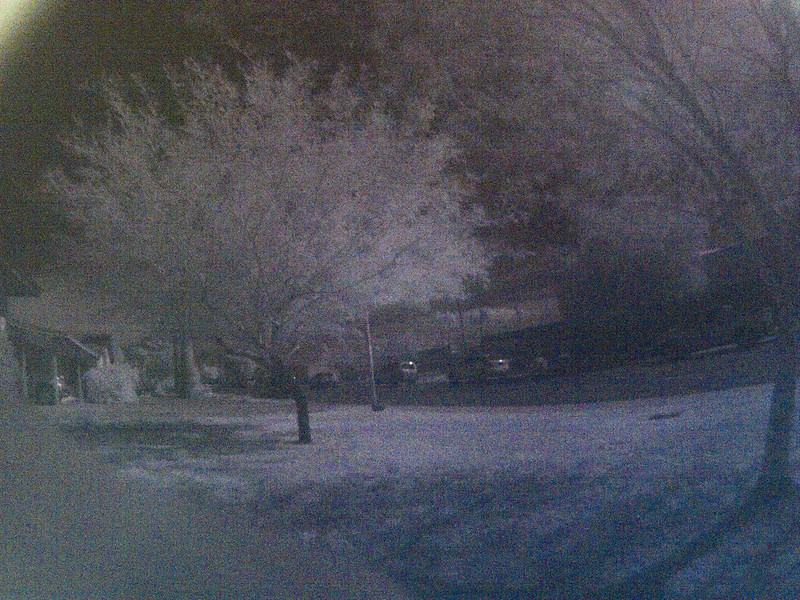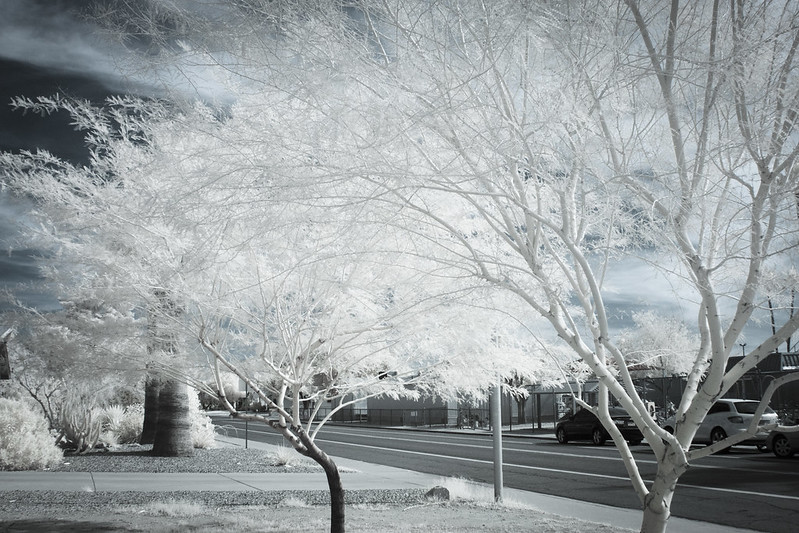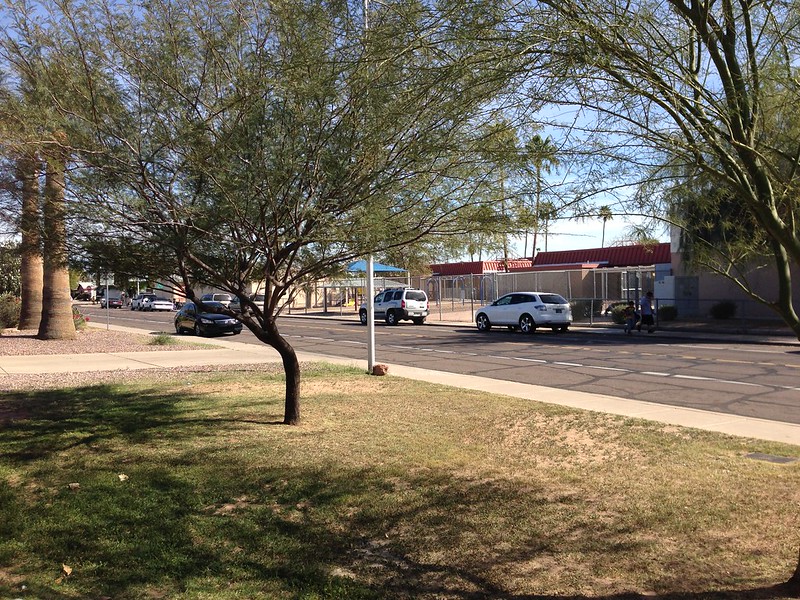Some early tests.
It works, But not well.
Using an R72 IR filter by HOYA
I got a 4 stop under exposed image ISO100 1/30sec. (not shown below)
Exp comp had little to no effect on the image. I tried +2, +1, 0 and -1
At Auto ISO -0 exposure compensation- the camera opted for ISO1600 1/30th sec at that level it is noisy but it made an image. (Shown below)
The image comes out as expect, very magenta and ready to white balance.
After some work this is the best IR image I could make with filtration on the FC200 camera.
I had to make the image while holding the filter over the lens as the filter kit is still in the mail. When it arrives I will try to make a better image from the air, though I don't expect much.
I will say that this is probably not good enough for anything more than a novelty.
If I were you I would find a very small IR camera and velcro it onto the bottom of the P2V camera. Then just record video with that while you are in the sky and review the video later.
If you have a ton of money, buy a large Octocopter and put a canon 5Dii converted to IR on it with a 3axis gimbal and a video downlink.
Yes this will cost you like $10-15K USK but it will get the job done well.
These trees have green leaves that look white in this photo. This is what near field IR should look like.
FC200 with HOYA 720nm IR filter-----

DJI00004 by resevordg, on Flickr
-----------
Here is what a 720NM Canon 40D conversion looks like from the same location.

IMG_7795-Edit by resevordg, on Flickr
-----------
And here is an iPhone 5

photo by resevordg, on Flickr
It works, But not well.
Using an R72 IR filter by HOYA
I got a 4 stop under exposed image ISO100 1/30sec. (not shown below)
Exp comp had little to no effect on the image. I tried +2, +1, 0 and -1
At Auto ISO -0 exposure compensation- the camera opted for ISO1600 1/30th sec at that level it is noisy but it made an image. (Shown below)
The image comes out as expect, very magenta and ready to white balance.
After some work this is the best IR image I could make with filtration on the FC200 camera.
I had to make the image while holding the filter over the lens as the filter kit is still in the mail. When it arrives I will try to make a better image from the air, though I don't expect much.
I will say that this is probably not good enough for anything more than a novelty.
If I were you I would find a very small IR camera and velcro it onto the bottom of the P2V camera. Then just record video with that while you are in the sky and review the video later.
If you have a ton of money, buy a large Octocopter and put a canon 5Dii converted to IR on it with a 3axis gimbal and a video downlink.
Yes this will cost you like $10-15K USK but it will get the job done well.
These trees have green leaves that look white in this photo. This is what near field IR should look like.
FC200 with HOYA 720nm IR filter-----

DJI00004 by resevordg, on Flickr
-----------
Here is what a 720NM Canon 40D conversion looks like from the same location.

IMG_7795-Edit by resevordg, on Flickr
-----------
And here is an iPhone 5

photo by resevordg, on Flickr





